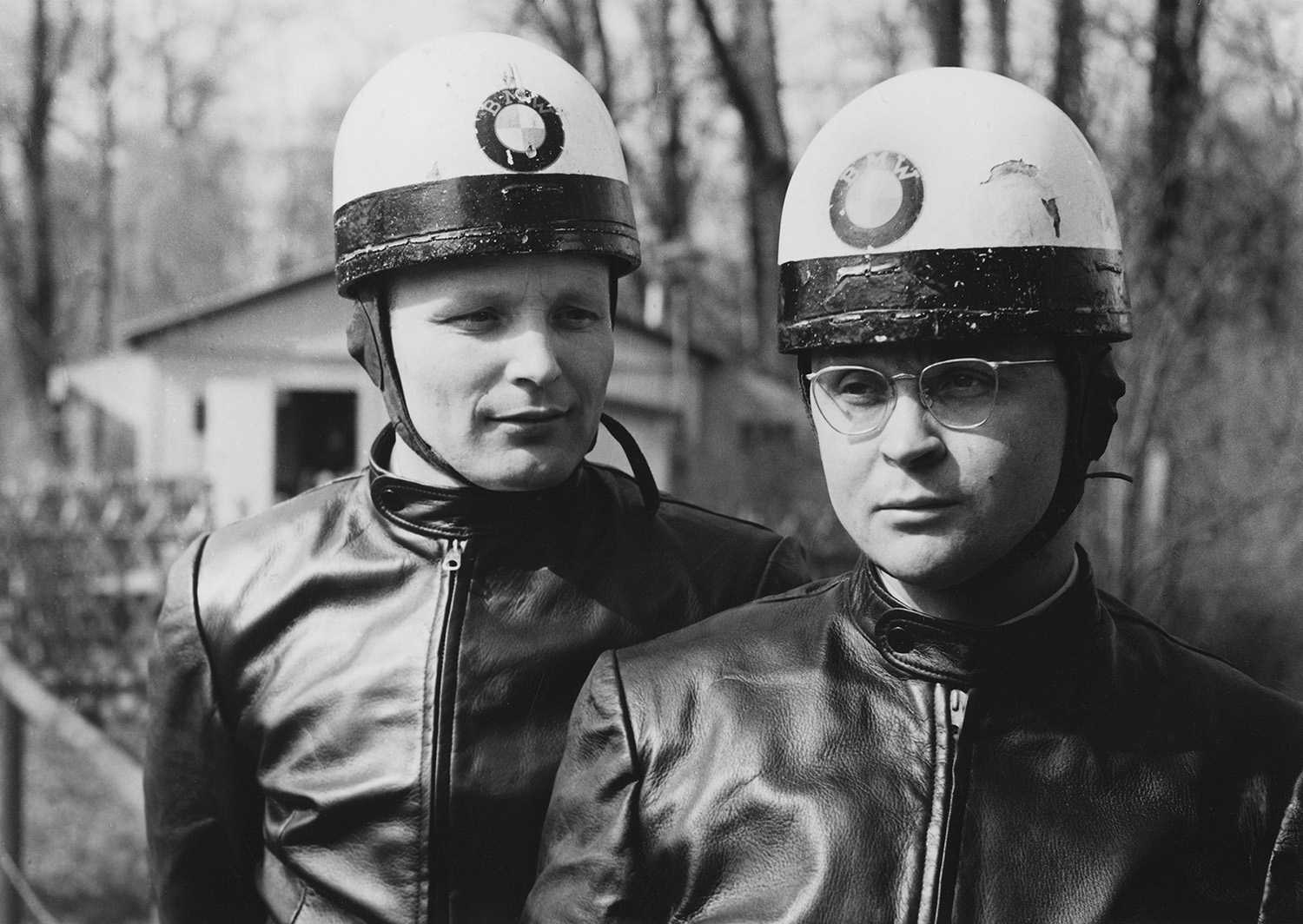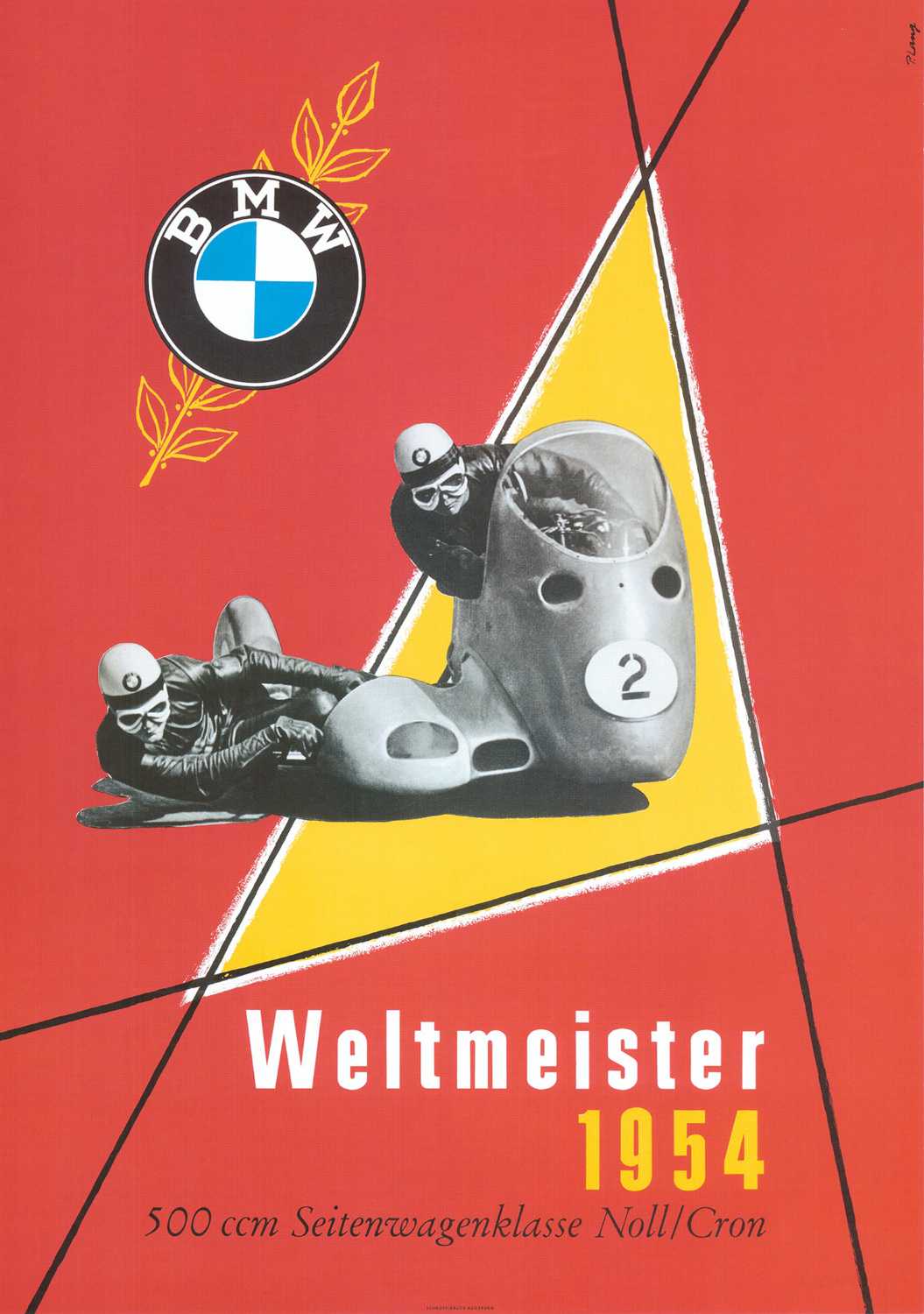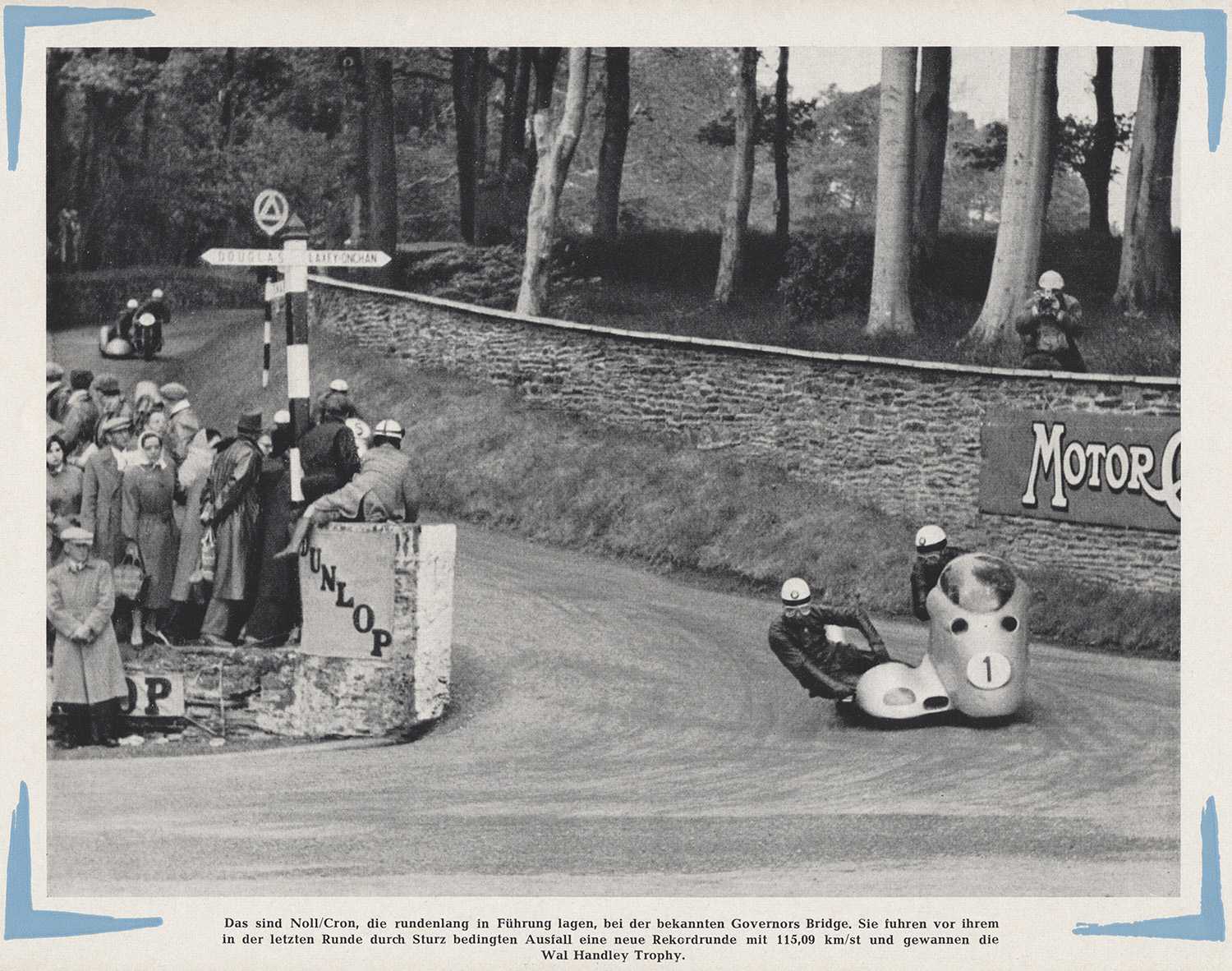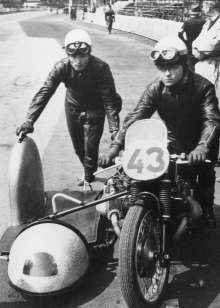Wilhelm Noll may be far from a household name in the modern era, but back in his racing heyday he was one of motor sport’s headline-makers-in-chief. Noll was determined to achieve great things and he knew he had a special talent to back up the iron will. The German was a brilliant motorcycle sidecar combination rider. And his good friend Fritz Cron provided the necessary balance with almost acrobatic dexterity.
Wilhelm Noll was born in the town of Kirchhain near Marburg on 15 March 1926. Petrol flowed through his veins from an early age, his father having run his own bicycle and motorbike workshop since 1921. Just around the corner lived the Cron family, whose son Fritz (born 31 March 1925) became Noll’s closest friend. The pair’s adventure playground of choice was the Noll family workshop. So it was little surprise that Wilhelm learnt to ride motorcycles and drive cars while still at school – and that he knew his way around a motor vehicle as a result. Wilhelm’s father would like to have seen his son follow in his footsteps in a sporting sense as well, having been a successful bicycle racer in the 1920s. But Wilhelm – with Fritz Cron forever at his side – had motor sport ambitions in mind. And nothing fitted the bill better than sidecar racing, a proper team sport.
In the years immediately after the Second World War, however, laying your hands on a suitable racing machine demanded some creative thinking. In Noll’s case the path led to a BMW R 66 that would today be declared ready for the scrapheap. Wilhelm’s father was duly appalled to find that his son had traded in his beautifully rebuilt DKW 350 NZ for the R 66 and was convinced the project was doomed to failure. With great diligence and meticulousness, Wilhelm and Fritz set about proving Noll snr wrong. Moral and practical support from successful Marburg-based bike racer Karl Lottes gave them an extra boost. And, impressed by how the restoration project was coming along, a friend of Noll’s father – the then well-known sports car racer and BMW sales representative Helm Glöckler – used his factory contacts in Munich to assist in the procurement of parts.
Turning the motorcycle into a functioning entity was one thing, but there was also the sidecar to consider. The widespread shortages of the immediate post-war era provided a platform for outside-the-box thinking, and when a sidecar owner came forward who also had an urgent need for three cubic metres of building timber, Noll snr. stepped in (it just so happened he had the requisite materials lying at the back of his shed). The willingness of Wilhelm’s father to trade this suddenly valuable commodity confirmed that he was now very much on board with his offspring’s plans and eager to help. The sidecar was in full working order and, some extensive test runs later, the pairing’s debut race was pencilled in for May 1948 at an event in Cologne. The race organisers were less keen on accommodating the rookies, though, and it took the intervention of the influential Lottes to change their minds. Noll (at the controls) and Cron (in the sidecar) duly repaid his faith by securing second place in their first ever competitive outing. Next up was the Dieburger Dreiecksrennen race soon after, and this time they went one better: the race victory was theirs!
This success put those early hiccups with race organisers firmly to bed, as Noll and Cron concluded race after race with a skip up the podium steps. Back then, prize money barely registered and competitors were often paid in material goods. So it was that Wilhelm Noll was once presented with three metres of cloth, with which he had a dinner suit – rather than racing overalls – made. In 1950 Noll and Cron were granted their much anticipated racing licence and they went on to finish the season top of the class for 600cc machines without a supercharger. From 1951 they competed with a BMW in the half-litre class, winning at the Sachsenring and continuing to accumulate podium finishes.
In 1951 the team lined up with hydraulic combination brakes developed by Wilhelm Noll himself, leaving their competitors to marvel at the sudden “late brakers” ahead of them up the road. This – allied to the formidable skill of Wilhelm Noll and Fritz Cron – also caught the attention of the BMW factory operation, and in 1953 the duo joined the company’s works team.
Monza, 12 September 1954: Wilhelm Noll and Fritz Cron took the chequered flag at the Italian Grand Prix with their fully faired BMW sidecar to notch up their third victory of the season. Mechanic Noll and telephone engineer Cron had already won two rounds of the World Championship – at the German Grand Prix and Swiss Grand Prix.
The pairing rounded off a successful season with two second places (at the Ulster GP in Belfast and the Belgian Grand Prix at Spa-Francorchamps) and a third place at the TT on the Isle of Man. This meant the BMW sidecar had recorded podium finishes in all six rounds of the World Championship, as Noll and Cron brought the years of dominance by Norton machines in this class of racing to an end and secured Germany its first ever World Championship crown.
Such a scenario had appeared unlikely, to say the least, as the season got under way. Riding a faired factory Norton, the Englishman Eric Oliver, four-times world champion and the title holder at the time, raced to victory with passenger Les Nutt in the first three races of the season. However, at the Feldbergrennen race, which didn’t count towards the World Championship, Oliver suffered a serious accident which ruled him out of the German GP at the Solitude circuit near Stuttgart. Noll and Cron grasped their chance with both hands and guided the RS to what was probably BMW’s first ever win in a World Championship event.
Noll and Cron once again led the way over the finish line in the fifth race of the season, the Swiss Grand Prix. Their rival Oliver registered only two points, and ahead of the final race of the season the two sidecars were tied for first place on 26 points. However, Oliver, his arm back in plaster, was unable to line up at Monza, which left Wilhelm Noll and Fritz Cron – competing in a fully faired sidecar for the first time – needing only to finish in the points to win the title. Not that such modest ambitions were ever going to be enough. The pairing led the race in commanding style from the start, increasing their margin over the Norton machine of Smith and Dibben in second place by over four seconds per lap. There was to be no grand showdown.
The press were downhearted, deprived of the climatic head-to-head between the two leading machines they had been looking forward to. Nevertheless, in setting new lap and track records Noll and Cron had proved themselves worthy world champions. Indeed, even Oliver would likely have had little chance against the factory RS, whose new fully faired design had brought a significant speed advantage.
That first World Championship title in 1954 kickstarted a run of success without parallel in the motor racing world. Up to 1974 BMW sidecars accounted for no fewer than 19 riders’ World Championship titles and 20 manufacturers’ crowns. Noll and Cron repeated their title win in 1956, having been forced to settle for the runners-up slot in 1955. In autumn 1956, following the final round of the World Championship, the two men brought the curtain down on their active motor sport careers. Wilhelm Noll became a workshop supervisor at his father’s dealership, and took over the running of the business in 1963. He remained at the helm of BMW Autohaus Noll until 1990.
Noll never turned his back on motor sport, though, sitting as president of German motor sport’s governing body, the OMK. In 2014, 60 years on from that maiden World Championship win, he passed on his extensive collection of sidecar memorabilia to BMW Classic, including a large number of rare and previously unreleased images, films and audio recordings. These are currently being digitalised and reviewed. On 4 October 2015 another historic motor sport event will celebrate its 60th anniversary: on this day in 1955 Wilhelm Noll posted a quite incredible speed of 280.1 km/h (174 mph) in a specially modified sidecar on a section of autobahn between Munich and Ingolstadt closed off to other traffic.
Wilhelm Noll and his passenger Fritz Cron are two racers whose names may no longer be on everybody’s lips, but they achieved some quite remarkable feats in their day – and in the process etched those names into motor sport history.





